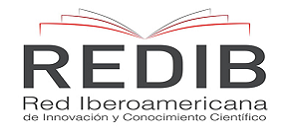Influence of different forms of creatine supplementation on aerobic and anaerobic capacity of soccer players during preparation period
Keywords:
Creatine supplementation; Soccer, Aerobic and anaerobic capacityAbstract
Objectives: The aim of this study was to compare the influence of creatine monohydrate and creatine malate supplementation on aerobic and anaerobic capacity in semi-professional soccer players during preparation period.
Methods: 15 adult soccer players from polish second league club took part in the study. Participants were divided into two groups (Group 1: supplemented their diet with creatine monohydrate; group 2: used creatine malate). Before and after five-week preparations the aerobic (PWC 170 test) and anaerobic (Wingate test) capacity of the players were measured.
Findings: Significant increase in PWC 170 indicator, maximal oxygen uptake, and total work capacity in Wingate test were noted in the group that consumed creatine monohydrate. Moreover, two-way ANOVA results showed significant effect for time in above mentioned variables.
Conclusions: Creatine monohydrate supplementation may efficiently support aerobic and anaerobic capacity development in semi-professional soccer players. Five-week creatine malate supplementation provides no significant changes in aerobic and anaerobic capacity.
Downloads
References
Jastrzębski Z. Zakres obciążeń treningowych w piłce nożnej i ręcznej a ich wpływ na rozwój sportowy zawodników. AWFiS Gdańsk, 2004.
Maughan R, Bruke L. Nutrition for sports performance. Kraków: Medicina Sportiva, 2000.
Bańkowski E. Biochemia: podręcznik dla studentów studiów licencjackich i magisterskich. Wrocław: MedPharm Polska, 2014.
Zając A. Wpływ suplementacji kreatyną i β-hydroksy-β-metylomaślanem na moc anaerobową oraz skład ciała koszykarzy. Katowice: Wydawnictwo AWF Katowice, 2003.
Tomaszewski W, Jakubowska E, Kozłowski A, Paliszewska M, Sikorzak W, Tomaszewki M. Odżywki i preparaty wspomagające w sporcie: poradnik dla amatora i profesjonalisty. Warszawa: Agencja Wydawnicza Medsportpress, 2001.
Kreider RB. Dietary supplements and the promotion of muscle growth with resistance exercise. Sports Med. 1999; 27(2): 97-110. https://doi.org/10.2165/00007256-199927020-00003
Ostojic SM. Creatine supplementation in young soccer players. Int J Sport Nutr Exerc Metab. 2004; 14: 95-103. https://doi.org/10.1123/ijsnem.14.1.95
Williams J, Abt G, Kilding AE. Effects of creatine monohydrate supplementation on simulated soccer performance. Sports Physiol Perform. 2014; 9(3): 503-510. https://doi.org/10.1123/ijspp.2013-0407
Mujika I, Padilla S, Ibañez J, Izquierdo M, Gorostiaga E. Creatine supplementation and sprint performance in soccer players. Med Sci Sports Exerc. 2000; 32(2): 518-525. https://doi.org/10.1097/00005768-200002000-00039
Kreider RB, Greenwood M. Kreatyna. Sport wyczynowy. 2003; 1-2, 457-458.
Górski J. Fizjologiczne podstawy wysiłku fizycznego. Warszawa: Wydawnictwo Lekarskie PZWL, 2006.
Jaskólski A, Jaskólska A. Podstawy fizjologii wysiłku fizycznego z zarysem fizjologii człowieka. Wrocław: Wydawnictwo AWF Wrocław, 2005.
Górski J. Fizjologia wysiłku fizycznego. Warszawa: Wydawnictwo Lekarskie PZWL, 2011.
Radzimiński Ł. Wpływ treningu interwałowego na poziom wydolności fizycznej i sprawności specjalnej 15-16 letnich piłkarzy nożnych. AWFiS Gdańsk, 2016.
Chwalbińska-Moneta J. Effect of Creatine Supplementation on Aerobic Performance and Anaerobic Capacity in Elite Rowers in the Course of Endurance Training. Int J Sport Nutr Exerc Metab. 2003;13: 173-183. https://doi.org/10.1123/ijsnem.13.2.173
Zoeller RF, Stout JR, O'kroy JA, Torok DJ, Mielke M. Effects of 28 days of beta-alanine and creatine monohydrate supplementation on aerobic power, ventilatory and lactate thresholds, and time to exhaustion. Amino Acids. 2007; 33(3): 505-510. https://doi.org/10.1007/s00726-006-0399-6
Murphy AJ, Watsford ML, Coutts AJ, Richards DA. Effects of creatine supplementation on aerobic power and cardiovascular structure and function. J Sci Med Sport. 2005; 8(3): 305-313. https://doi.org/10.1016/s1440-2440(05)80041-6
Kreider RB, Ferreira M, Wilson M, Grindstaff P, Plisk S, Reinardy J, Cantler E, Almada AL. Effects of creatine supplementation on body composition, strength, and sprint performance. Med Sci Sports Exerc. 1998; 30(1): 73-82. https://doi.org/10.1097/00005768-199801000-00011
Kreider RB. Effects of creatine supplementation on performance and training adaptations. Mol Cell Biochem. 2003; 244(1): 89-94. https://doi.org/10.1023/A:1022465203458
Jówko J, Ostaszewski P, Jank M, Sacharuk J, Zieniewicz A, Wilczak J, Nissen S. Creatine and beta-hydroxy-beta-methylbutyrate (HMB) additively increase lean body mass and muscle strength during a weight-training program. Nutrition. 2001;17(7-8): 558-566. https://doi.org/10.1016/s0899-9007(01)00540-8
Faramarzi M, Nuri R, Banitalebi E. The effect of short-term combination of HMB (beta-hydroxybeta-methylbutyrate) and creatine supplementation on anaerobic performance and muscle injury markers in soccer players. Braz. J. Biomotricity. 2009; 3(4): 366-375.
Williams MH, Branch JD. Creatine supplementation and exercise performance: An update. J Am Coll Nutr. 1998; 17(3): 216-234. https://doi.org/10.1080/07315724.1998.10718751
Downloads
Published
How to Cite
Issue
Section
License
Copyright and Licensing
For all articles published in Atena Journals, copyright is retained by the authors. Articles are licensed under an open access Creative Commons CC BY 4.0 license, meaning that anyone may download and read the paper for free. In addition, the article may be reused and quoted provided that the original published version is cited. These conditions allow for maximum use and exposure of the work, while ensuring that the authors receive proper credit.
Reproducing Published Material from other Publishers
It is absolutely essential that authors obtain permission to reproduce any published material (figures, schemes, tables or any extract of a text) which does not fall into the public domain, or for which they do not hold the copyright. Permission should be requested by the authors from the copyrightholder (usually the Publisher, please refer to the imprint of the individual publications to identify the copyrightholder).
Permission is required for:
- Your own works published by other Publishers and for which you did not retain copyright.
- Substantial extracts from anyones' works or a series of works.
- Use of Tables, Graphs, Charts, Schemes and Artworks if they are unaltered or slightly modified.
- Photographs for which you do not hold copyright.
Permission is not required for:
- Reconstruction of your own table with data already published elsewhere. Please notice that in this case you must cite the source of the data in the form of either "Data from..." or "Adapted from...".
- Reasonably short quotes are considered fair use and therefore do not require permission.
- Graphs, Charts, Schemes and Artworks that are completely redrawn by the authors and significantly changed beyond recognition do not require permission.
Obtaining Permission
In order to avoid unnecessary delays in the publication process, you should start obtaining permissions as early as possible. If in any doubt about the copyright, apply for permission. Atena Journals cannot publish material from other publications without permission.
The copyright holder may give you instructions on the form of acknowledgement to be followed; otherwise follow the style: "Reproduced with permission from [author], [book/journal title]; published by [publisher], [year].' at the end of the caption of the Table, Figure or Scheme.














